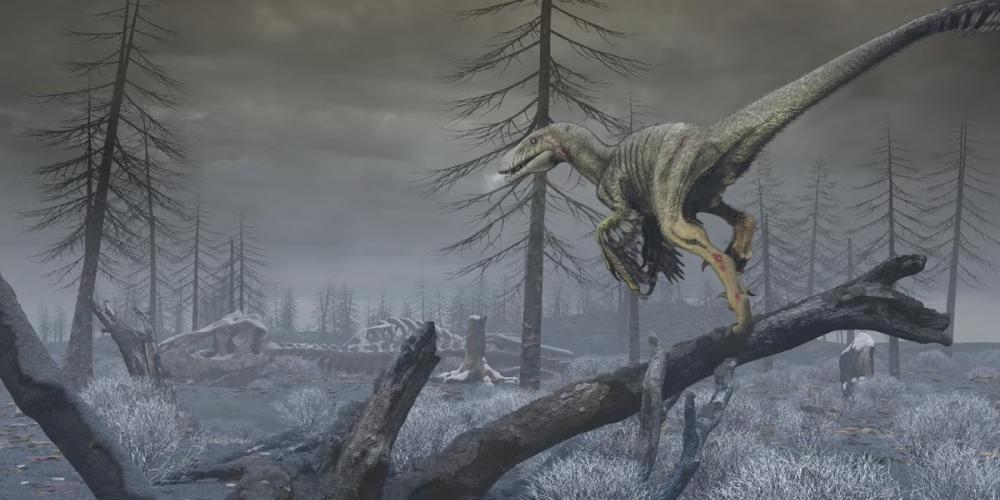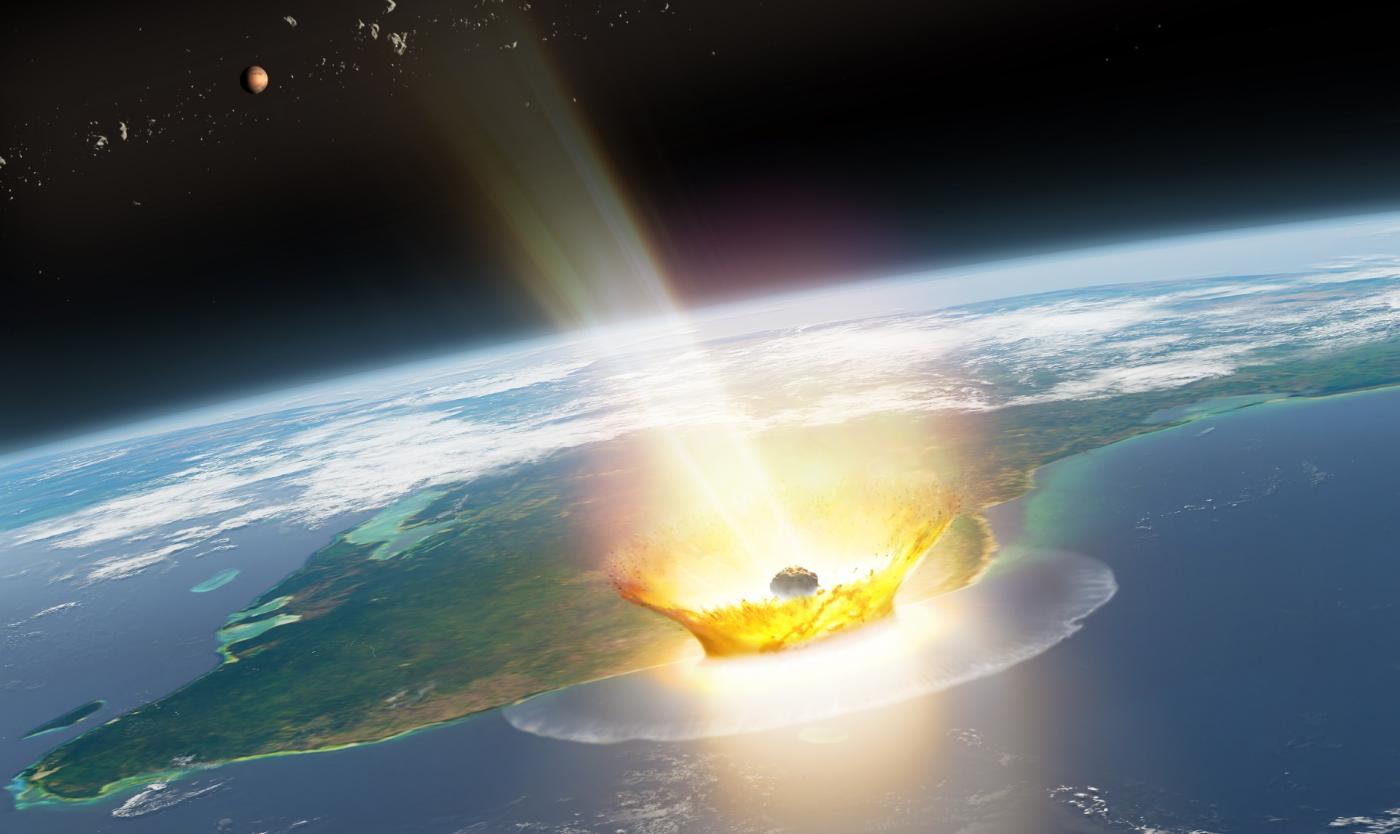
Until now, the exact circumstances surrounding the mass extinction of the dinosaurs – such as the effect on the global climate of the material ejected by the meteorite’s impact – have been unclear. Previous research had suggested that rather than silicate dust emissions into the atmosphere, sulphur gas and particles released during the impact and soot from later wildfires were the primary triggers for a “nuclear winter”. However, this was based on limited understanding of the physical properties of these particles. A new study published in Nature Geoscience, involving researchers from the Vrije Universiteit Brussel, shines new light on the end of the dinosaurs.
Pim Kaskes, Steven Goderis and Philippe Claeys, of the VUB research group Archaeology, Environmental Changes & Geo-Chemistry (AMGC), researched the grain size of these dust particles using laser diffraction analysis at the Vrije Universiteit Amsterdam. The particles were sampled from a geological site in North Dakota in the US.
“We specifically sampled the upper millimetre-thin interval of the Cretaceous-Palaeogene boundary. This interval showed a very fine and uniform grain-size distribution, which we interpret as the settling of fine dust that we can link to the meteorite’s impact,” Kaskes says. “The new results show much finer grain sizes than previously used in climate models, and this has important implications for our reconstructions.” Kaskes successfully defended his PhD research into the Chicxulub meteorite impactat VUB on 26 April this year.
To study the role of sulphur, soot and silicate dust on the post-impact climate, Cem Berk Senel, Orkun Temel and Özgür Karatekin, scientists at the Royal Observatory of Belgium (ROB), developed a new palaeoclimate model. The new field data allowed them to better simulate the climatic and biological response to the Chicxulub impact. Their simulations show that a plume of micrometric silicate dust may have remained in the atmosphere for as much as 15 years after the impact, contributing to a global cooling of the Earth’s surface of up to 15° C. According to Steven Goderis and Philippe Claeys, this timescale corresponds to insights from the recent discovery of a clay layer rich in iridium in the centre of the Chicxulub crater in Mexico. The iridium is linked to the meteoritic dust that eventually settled over an estimated 20-year period.
In addition, the authors found that the particulate matter blocked solar radiation, suspending photosynthesis on Earth for almost two years. Plants and animals that were not adapted to survive the dark, cold and nutrient-poor conditions lasting almost two years would have died out en masse. This is consistent with data from fossils, according to co-author Johan Vellekoop, of KU Leuven and the Royal Belgian Institute of Natural Sciences.
“Flora and fauna that could enter a dormant phase – such as through seeds, cysts or overwintering in burrows – and adapt to a generalist lifestyle where they were not dependent on one particular food source, would generally survive the meteorite impact better,” he explains.
“Asteroids larger than a kilometre, which could potentially cause mass extinctions, are rare,” says Özgür Karatekin of the ROB. “But small and medium-sized asteroids in the 100-metre range are much more common in the solar system and can cause devastation on a regional or national scale.”
The European Space Agency’s Hera mission is Europe’s contribution to an international planetary defence experiment. The aim of the mission is to provide scientific information on the geophysics of asteroids and impact processes in general. The authors of this research affiliated with the ROB and VUB are involved in the project.
Reference
Cem Berk Senel, Pim Kaskes, Orkun Temel, Johan Vellekoop, Steven Goderis, Robert DePalma, Maarten A. Prins, Philippe Claeys, Özgür Karatekin. Chicxulub impact winter sustained by fine silicate dust. Nature Geoscience (2023). DOI: 10.1038/s41561-023-01290-4
This research was supported by the Federal Public Planning Service Science Policy (BELSPO) via the Chicxulub BRAIN-be project, a collaboration between the Royal Observatory of Belgium, the Vrije Universiteit Brussel and the Royal Belgian Institute of Natural Sciences. The authors also thank the support of grants from the Research Foundation – Flanders and a FED-tWIN project. The study was published in the prestigious journal Nature Geoscience.

